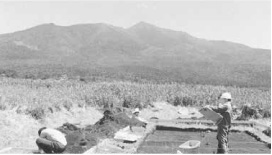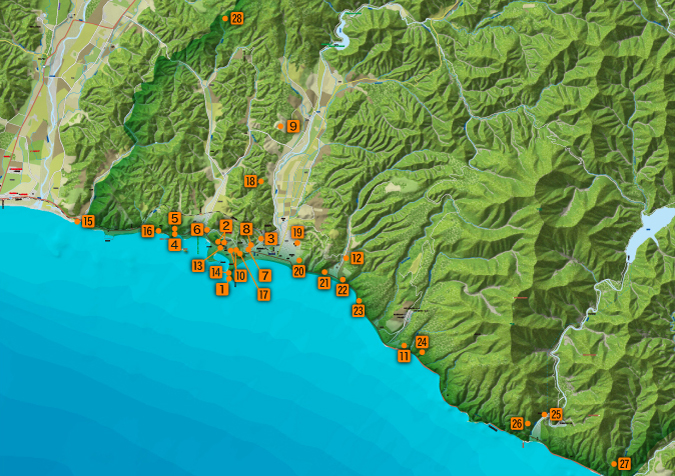1. Hokkaido's original inhabitants came from the north.
- Theme C:
Learning about and enjoying the symbiosis between humans and nature from history -
- 1. Hokkaido's original inhabitants came from the north
- 2. The hardships of the Ainu people and their restoration as an indigenous community
- 3. Prosperity brought to Hokkaido through distribution routes
- 4. Samani Mountain Path (Hokkaido's first national highway) and Tojuin Temple (one of the Three Temples of Ezo)
- 5.Living together with the sea
- ※Choose the desired content.

Excavation survey at the Fuyushima Site in 1981
The earliest traces of human life in Hokkaido are from the Upper Paleolithic age approximately 22,000 years ago. This was during the last global-scale Ice Age, when the Taisetsu and Hidaka mountains were covered with glaciers and perpetual snow. Sea levels were around 80 - 100 meters lower than today, and the Soya (La Perouse) Strait was a land bridge connecting to the northern continent. People from this time are considered to have come to Hokkaido in pursuit of animals migrating to escape the harsh glacial climate of northern regions.
The Ice Age ended when global temperatures rose 12,000 years ago. Around this time, Jomon period culture began to thrive across Japan; people used Jomon pottery and led lives of hunting, fishing, and gathering. The culture continued for about 10,000 years. In Samani (Mt. Apoi Geopark), 28 archaeological sites primarily from the late Jomon period (around 3,000 years ago) have been found. During the Jomon period, sea levels were up to 3 meters higher than today, and numerous archaeological sites from the time are found at the margins of middle terraces and hilly terrain today. In the Mt. Apoi area too, many such sites are located on marine terraces and hilly terrain.

Number of sites with buried cultural property in Samani: December 5, 1973: 14; May 15, 1980: 14

Around the 4th century BC, the rice farming-based Yayoi culture was introduced to western Japan and spread across its main island of Honshu. However, the culture did not cross the Tsugaru Strait into Hokkaido, due in part to the region's cold climate. In Hokkaido, Epi-Jomon culture thrived from the 1st century BC to around the end of the 6th century AD. People during this period continued hunting, fishing and other aspects of Jomon culture, and also began exchanges with people of different cultures, such as those of the Yayoi culture in the northeastern Tohoku area of Japan and northern cultures in Sakhalin and on the continent.



